Get PeakVisor App
Sign In
Search by GPS coordinates
- Latitude
- ° ' ''
- Longitude
- ° ' ''
- Units of Length

Yes
Cancel
Share ×

Scan the QR code and open PeakVisor on your phone
❤ Wishlist ×
Choose
Delete
The Drakensberg is one of several major mountain systems in South Africa, stretching along the eastern part of the country and the entirety of the nation of Lesotho. There are 4819 named mountains in the Drakensberg; the highest and most prominent is Thabana Ntlenyana (3,482 meters / 11,423 ft) in the Kingdom of Lesotho. Thabana Ntlenyana is also the highest peak in southern Africa.
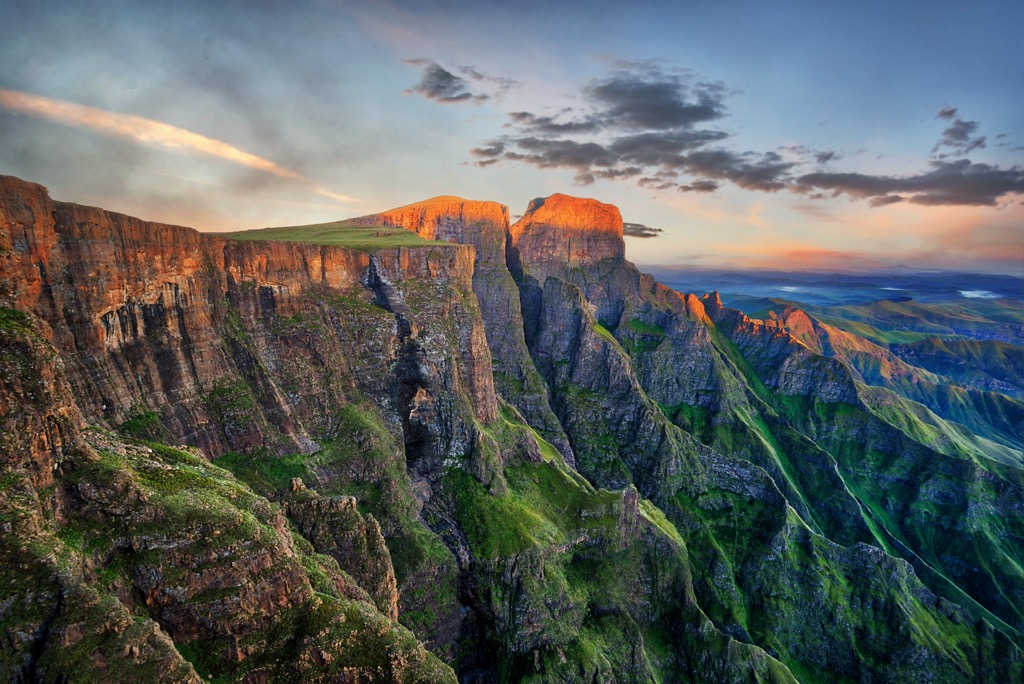
The Drakensberg Mountains are the highest and longest mountain range in Southern Africa, stretching for about 1,000 km (620 mi) from the Eastern Cape to the Limpopo provinces in South Africa. Drakensberg means Dragon’s Mountain in Afrikaans; the mountains are also known as uKhahlamba, translated as ‘Barrier of up-pointed spears’ in Zulu.
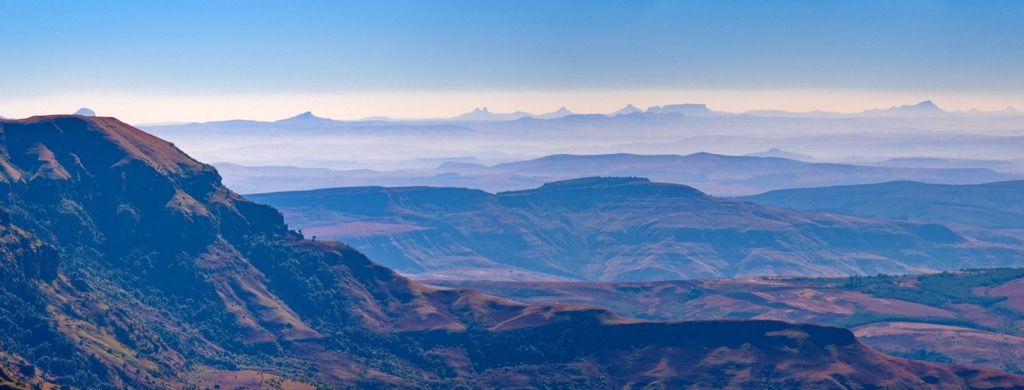
The Drakensberg forms part of the Great Escarpment, a precipitous, clifflike ridge separating the high central plateau of Southern Africa from the lower coastal plains. The Great Escarpment was formed about 150 million years ago when the continent of Gondwana broke apart and Antarctica drifted away from Africa. The Drakensberg Mountains are the eastern portion of the escarpment, where the continental crust bulged and cracked, creating rift valleys and volcanic eruptions.
This ecoregion is home to a rich biodiversity of plants and animals and a cultural heritage of rock art and historical sites. The mountains have different climatic zones, ranging from temperate grasslands and forests to alpine tundra and snow. The range is a source of many rivers, such as the Orange, Tugela, and Umzimvubu, and has numerous waterfalls, lakes, and wetlands.
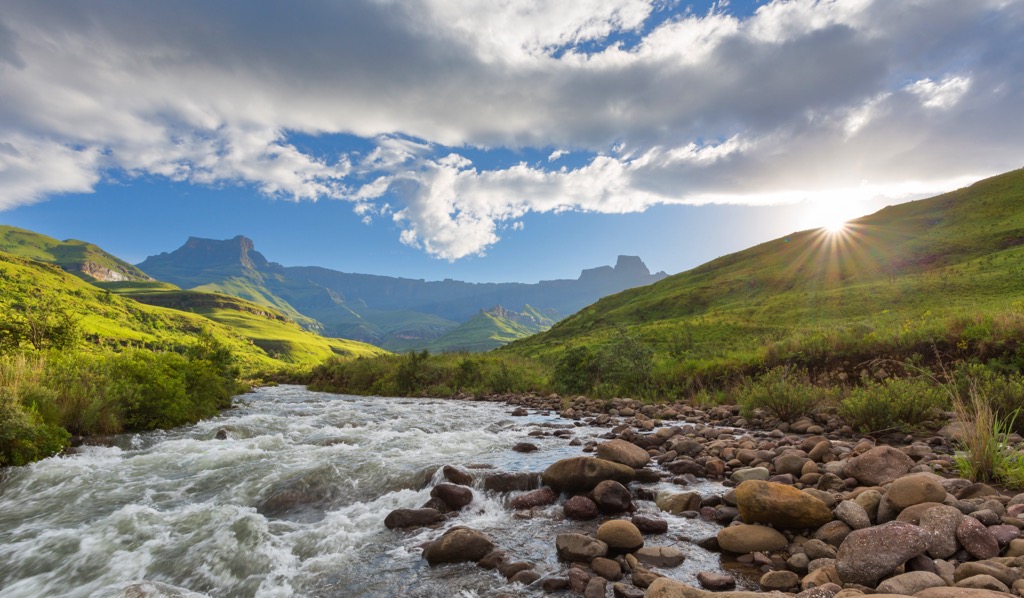
Humans have inhabited the Drakensberg Mountain for thousands of years. The mountains have over 35,000 examples of rock art, dating back to the Stone Age, made by the San people, the region's original inhabitants.
The mountains are also home to several national parks and nature reserves, such as the uKhahlamba-Drakensberg Park, a UNESCO World Heritage Site, as well as the Royal Natal National Park, Highmoor Nature Reserve, and the Golden Gate Highlands National Park, known for its sandstone formations and caves.
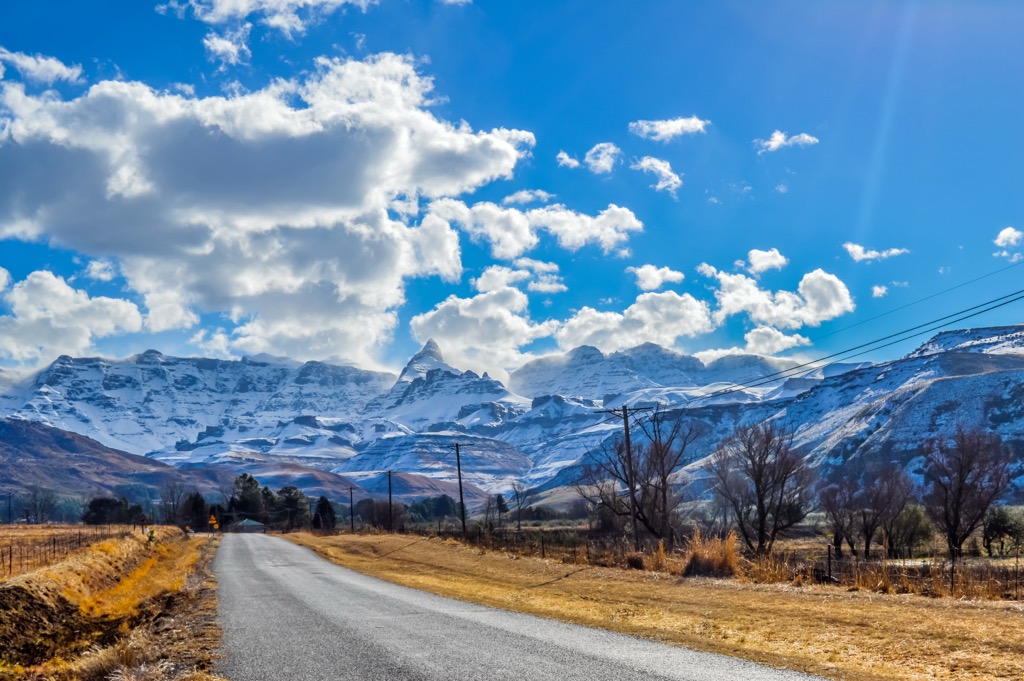
The Drakensberg Mountains result from a long and complex geological history involving sedimentation, volcanism, uplift, and erosion. The range comprises rock layers belonging to the Karoo Supergroup, which covers about two-thirds of South Africa. The Karoo Supergroup consists of various groups of rocks, from glacial deposits to shale and Triassic fossils that were deposited over 250 million years, from the late Carboniferous to the early Jurassic, when the supercontinent of Gondwana existed.
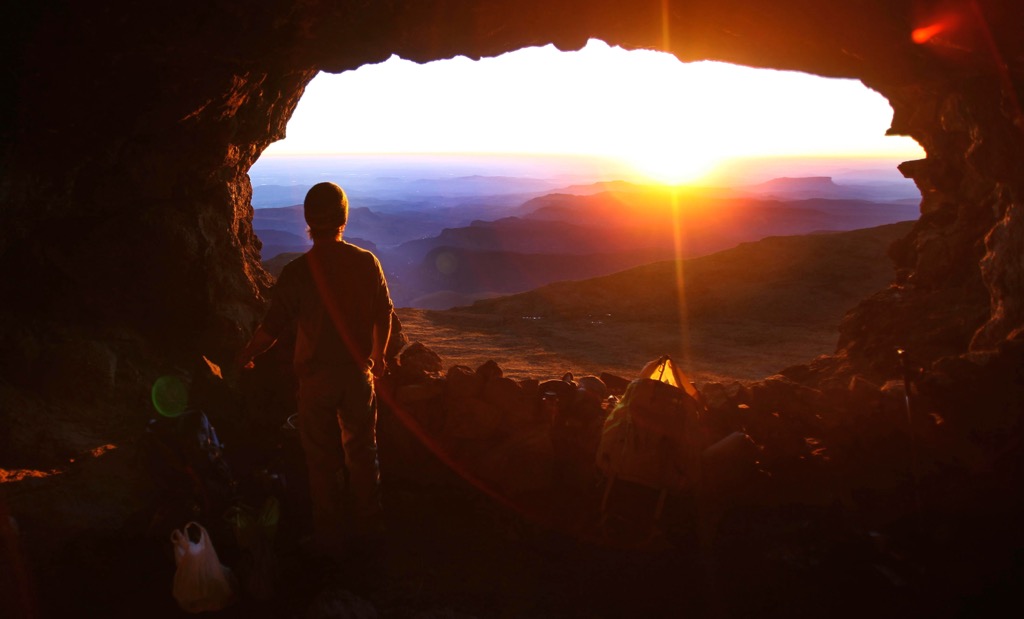
However, the two last layers - sandstone and basalt - are the main geological compositions of the Drakensberg. Basalt is a dark, hard, volcanic rock covering the mountaintops, forming flat-topped plateaus and steep-sided blocks and pinnacles. Sandstone is a softer, sedimentary rock that forms the lower slopes of the mountains, creating valleys and gorges.
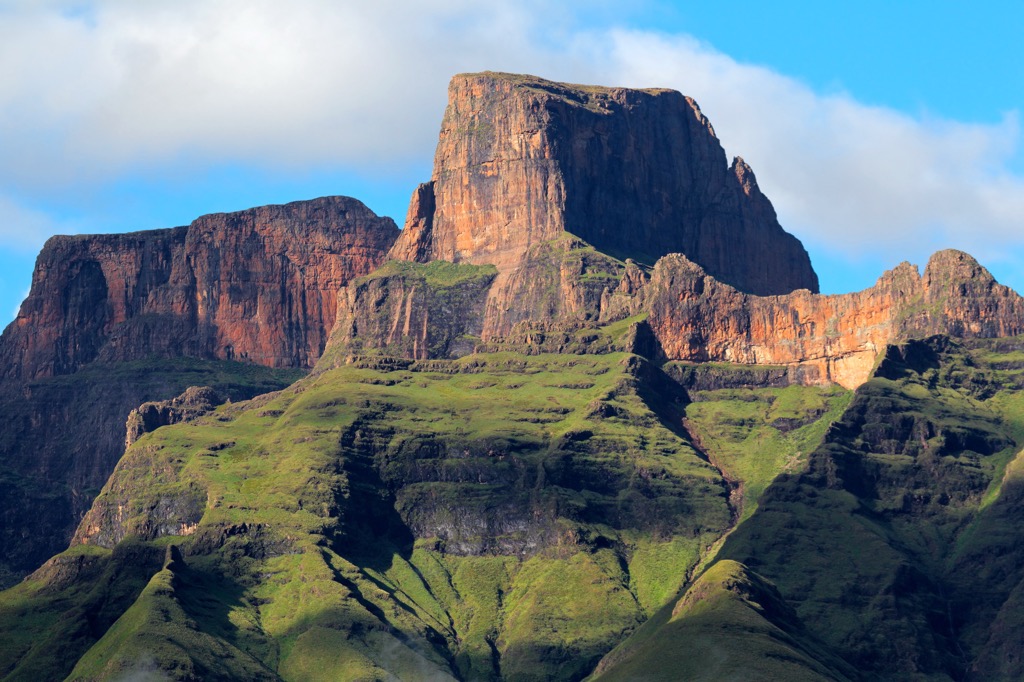
More than 600 species of birds, 200 species of mammals, and 2,000 species of plants thrive within the Drakensberg. The high elevations and steep slopes create a cooler climate than the surrounding lowlands, allowing different habitats to exist along the elevation gradient. The Drakensberg Mountains have been described as an alti-Montane grassland and woodland ecoregion, meaning they have high-elevation grasslands and forests.
Tussock grasses, sedges, and herbs dominate the grasslands. They are home to many grazing mammals, such as eland, mountain reedbuck, and oribi, as well as predators such as caracal, jackal, and leopard. The grasslands also support a rich bird diversity, including endemic and endangered species, such as the Drakensberg rockjumper, the Drakensberg siskin, and the bearded vulture.

The woodlands are found mainly on the lower slopes and valleys of the Drakensberg Mountains, where there is more moisture and shelter from the wind. Various types of trees, such as yellowwood, stinkwood, protea, and acacia, as well as shrubs, ferns, and lianas, thrive in this region. The woodlands provide habitat for many animals, such as baboons, bushbuck, duiker, and bushpig. Resident birds include the Knysna turaco, the Cape parrot, and the olive woodpecker.
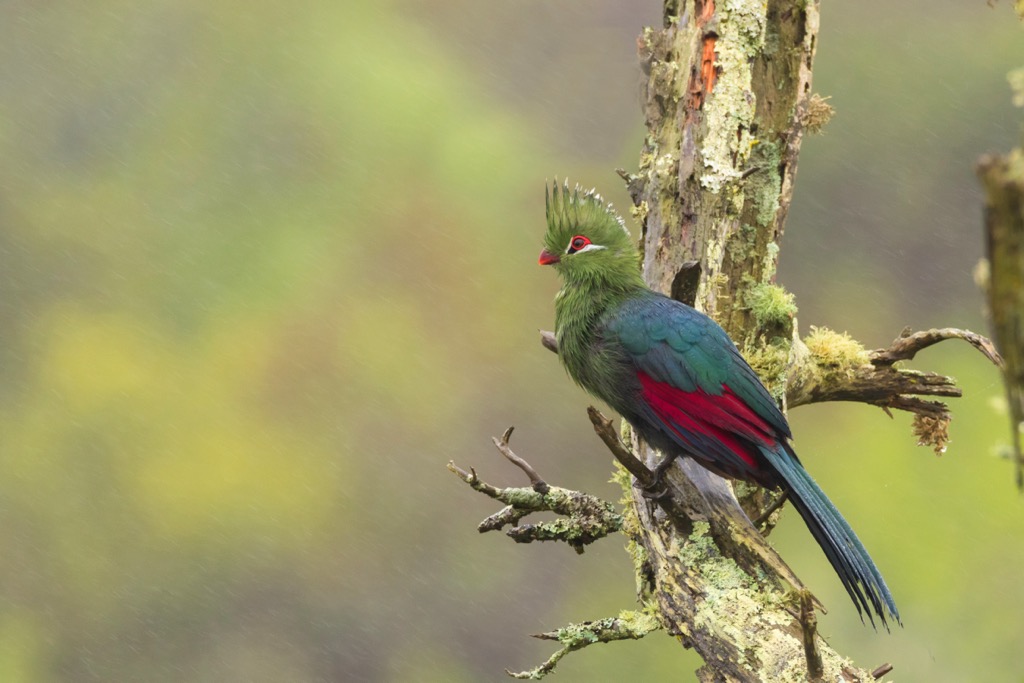
The Drakensberg offers evidence of human occupation from the Middle Stone Age between 300,000 and 30,000 years ago with stone tools, animal bones, and ochre fragments. The Later Stone Age, from 30,000 to 2,000 years ago, marked the development of a rich culture, notably depicted in rock art illustrating animals, humans, and activities like hunting and warfare.
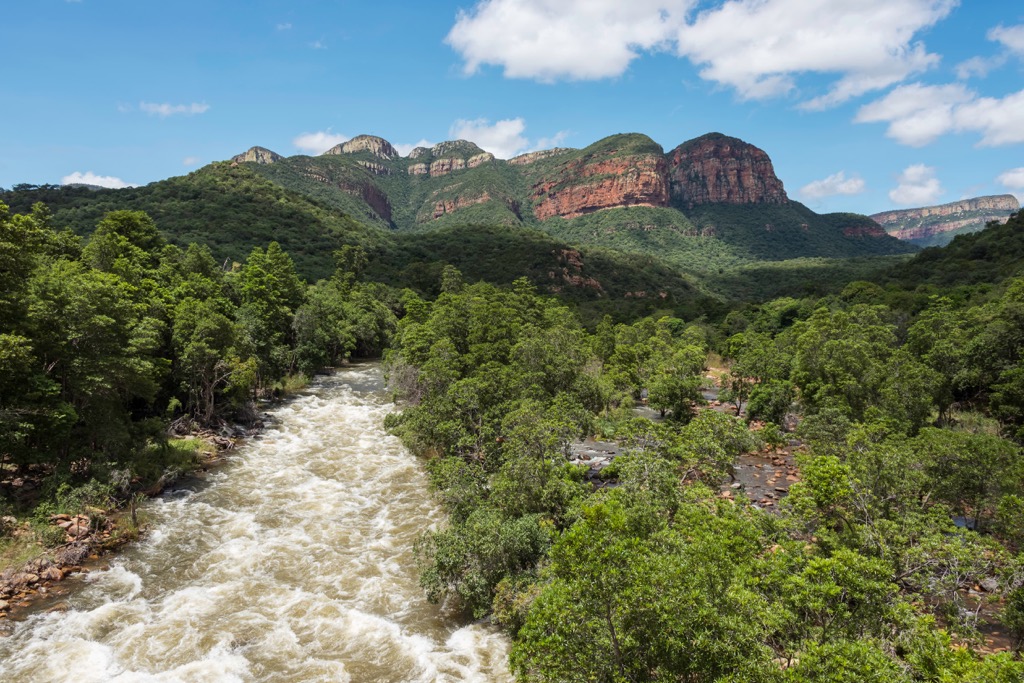
From 2,000 years ago until the 17th century, Bantu-speaking farmers settled, expanded territories, and established communities in the Drakensberg. The 18th century, known as the Drakensberg’s Colonial Period, brought European exploration and interaction with indigenous groups like the Zulu and Sotho. Conflict, including the Anglo-Zulu War, Basotho Wars, and Anglo-Boer War, characterized this era.
From the 20th century onwards, the Drakensberg became part of South Africa, attaining World Heritage status in 2000 for its natural and cultural significance. Today, it attracts visitors for its scenic beauty, wildlife, hiking trails, and rock art.
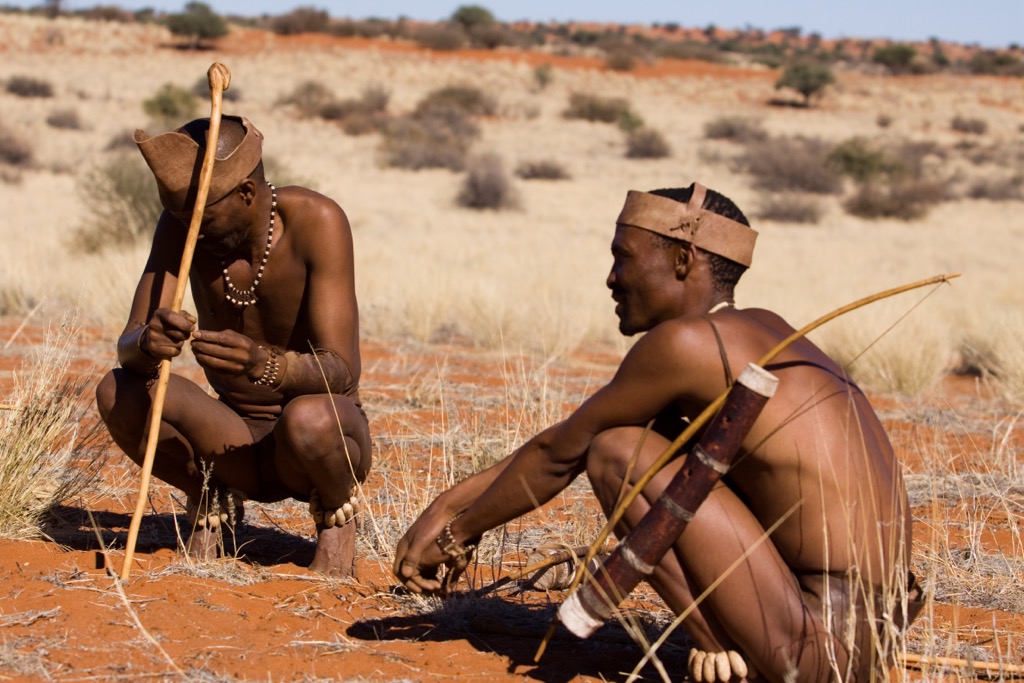
Thabana Ntlenyana, which means ‘beautiful little mountain’ in Sesotho, is anything but little; it is the tallest mountain in Lesotho (a small nation entirely encapsulated by South Africa) and southern Africa. The trail starts from Sani Top, which boasts the highest pub in Africa.
The hike is about 25 km (15.5 mi) round trip, and the terrain is rugged and lofty. The trail follows a series of ridges and valleys, crossing several rivers and streams. A cairn and a metal pole mark the summit of Thabana Ntlenyana and offer dramatic views of Thaba Putsoa, Mohlesi, and Kotisephola.
Several routes lead to the summit of Mafadi, South Africa’s highest peak. The most popular is the Corner-Leslie’s Loop, which starts and ends at the Injasuthi campsite, covering 64 km (40 mi) of rugged terrain.
The trail features views of the Injasuthi Greater Buttress from Centenary Hut and passes caves adorned with San rock art. The challenging ascent of Corner Pass leads to the escarpment, revealing sweeping vistas of mountains and valleys. Mafadi’s summit provides a panorama of the South Africa-Lesotho border and the Red Wall, Western Triplet, and Middle Triplet peaks.
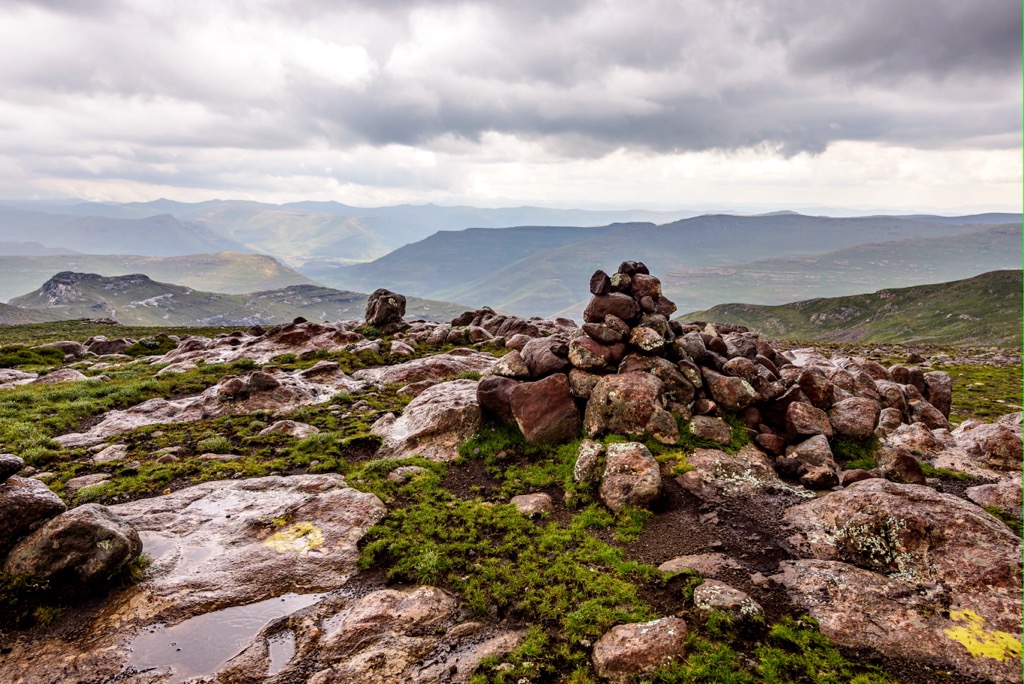
The Cathedral Peak Hike takes you to the top of one of the most iconic peaks in South Africa. Rated as difficult for its steep slopes and exposure to heights, the Cathedral Peak Hike covers 19 km (12 mi) with a total elevation gain of 1,600 meters (5,249 ft).
The hike starts from the Nature Conservation office. The route follows a good path to the foot of the main peak, then ascends the final few hundred meters to the summit via a short scramble section where many hikers use a rope to prevent a catastrophic fall. Summit views showcase the peaks of Bell, Outer Horn, and Puddings.
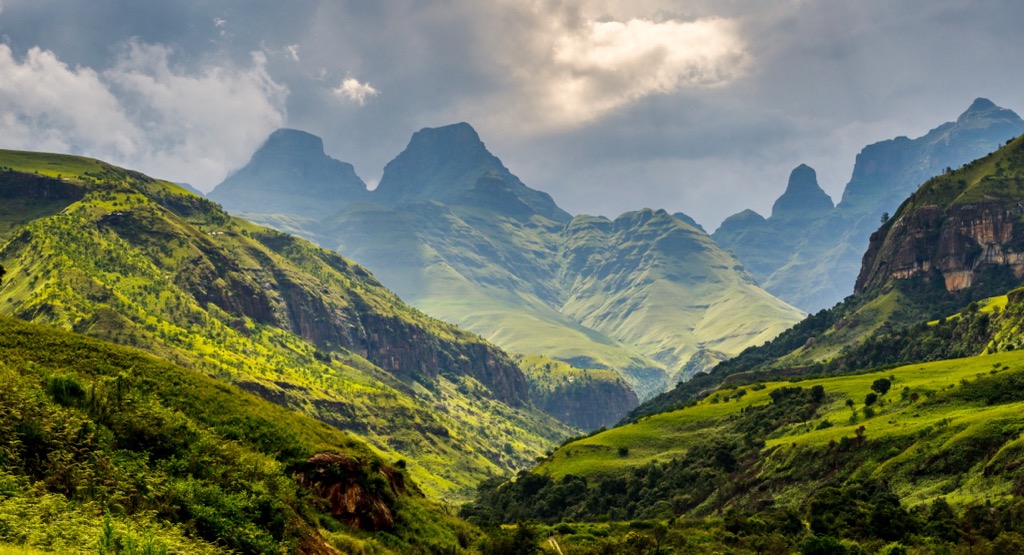
The Drakensberg Amphitheater Hike leads hikers to the top of the Drakensberg escarpment, a massive cliff face that stretches for 5 km (3 mi) and rises 1,220 meters (4,003 ft) above the valley. The main feature is Tugela Falls, the second-highest waterfall in the world, which drops 983 meters (3,225 ft) over the edge of the Amphitheater.
The 14.5 km (9 mi) round-trip hike starts at the Sentinel Carpark. There are two options to reach the summit: the chain ladders or the Kloof Gully. The chain ladders are two metal ladders that climb up a vertical rock face for about 40 meters (131 ft). The Kloof Gully is a steep and rocky scramble that requires some climbing skills and a guide.
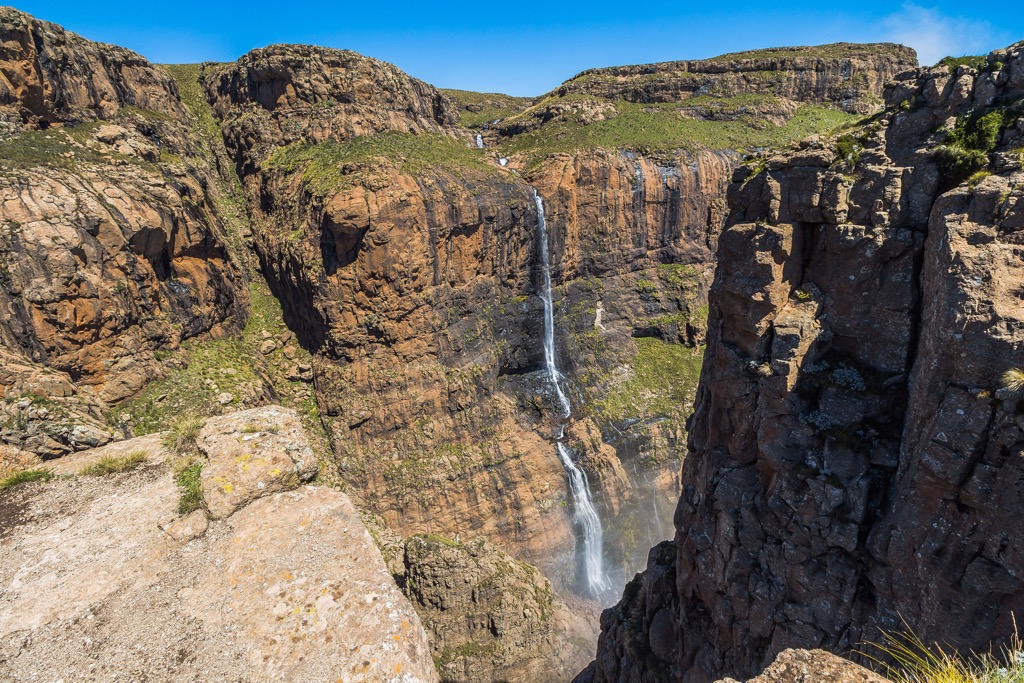
The Champagne Castle Hiking Trail is an adventurous route to the summit of the third-highest peak in South Africa. The trail starts at the Champagne Castle Hotel, where several other hiking trails stem, including the Fern Forest Trail, the Duikers Dam Trail, and the Mike’s Path Trail.
The 19 km (12 mi) route goes up the Mhlwazini Valley, between Champagne Castle on the right and Monk’s Cowl on the left. It follows the Grays Pass, a steep and rocky ascent that leads to the top of the escarpment with panoramic views of the Drakensberg. The trail then continues to the summit of Champagne Castle, with views of Ships Prow, Mhlwazini, and Champagne Castle Buttress.
Durban is the largest city in the KwaZulu-Natal province of South Africa and a popular destination for travelers who love sun, sea, and surf - the city is known for its beaches and world-class surf. It has a rich cultural diversity, with a sizeable Indian community influencing its cuisine and architecture (there are 3.1 million people of Indian heritage in South Africa, many of whom call Durabn home).
The Golden Mile is a stretch of beachfront that runs from uShaka Marine World to Moses Mabhida Stadium. It is a lively and scenic place to stroll, bike, skate, or jog and enjoy the views of the Indian Ocean and the city skyline.
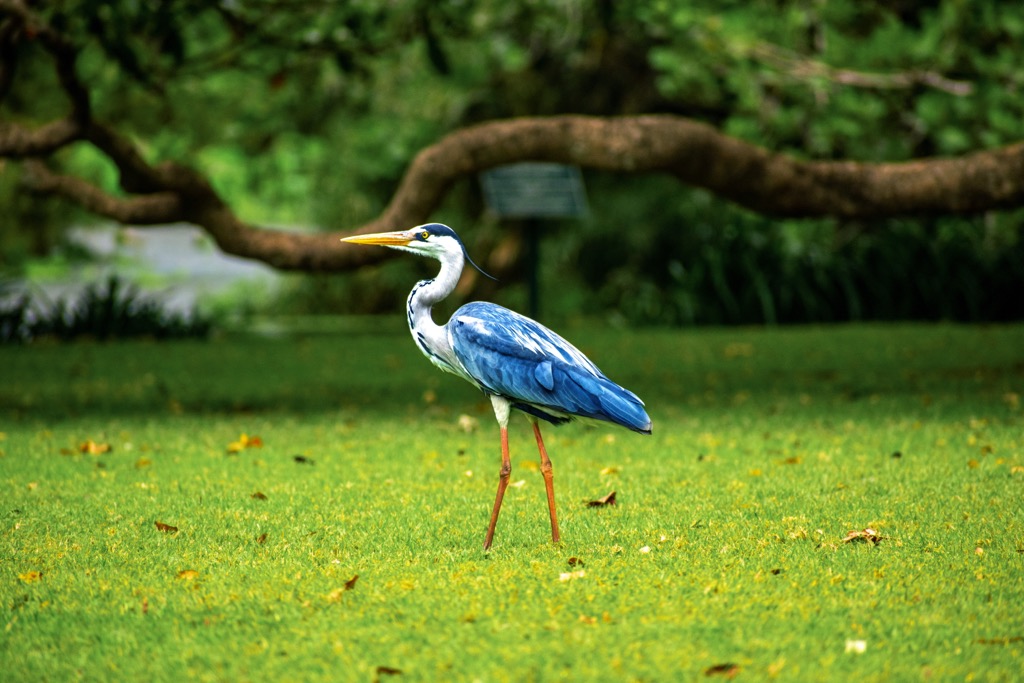
For a nature escape, Durban Botanic Gardens is Africa's oldest surviving botanic garden, dating back to 1849. It has a collection of plants from around the world, such as orchids, cycads, palms, and bromeliads. In addition, it’s home to birds, butterflies, monkeys, and other wildlife.
Umgeni River Bird Park houses over 800 birds from 200 local and exotic species, such as flamingos, parrots, owls, cranes, and hornbills. It hosts a free-flight bird show, where visitors can see birds flying, singing, and performing tricks.
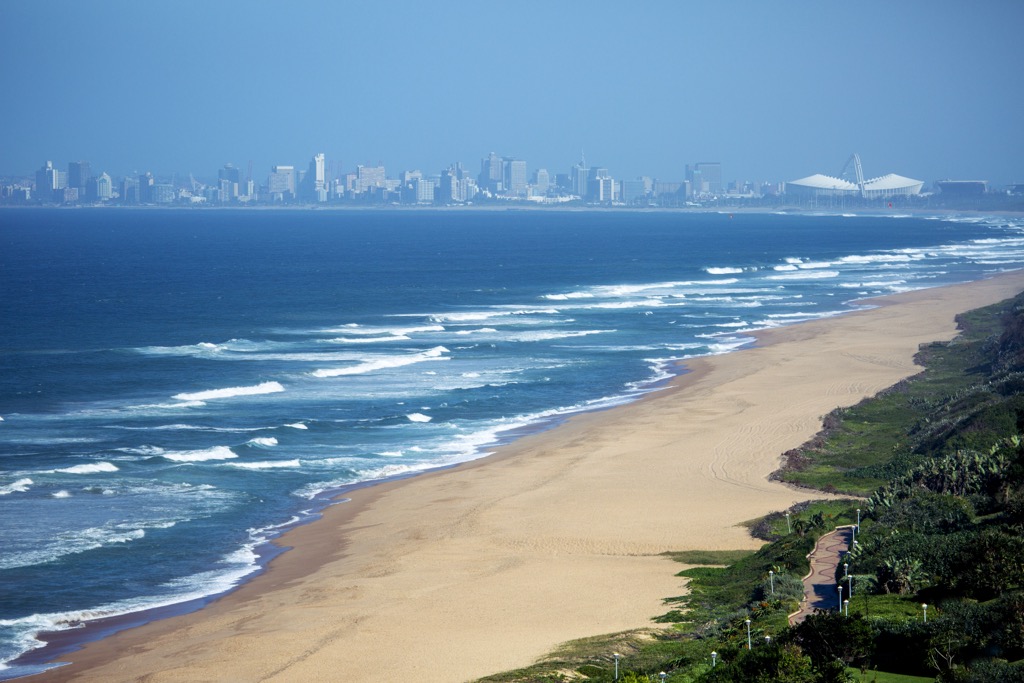
Pietermaritzburg is the capital and second-largest city of KwaZulu-Natal province. It is a historic city founded by the Boers in 1838 after defeating the Zulus at Blood River. It is also known as the City of Flowers for its beautiful gardens and parks.
The KwaZulu-Natal National Botanical Garden features diverse plants from South Africa and beyond. Its gardens and variety of trees attract many bird species, and walking trails weave throughout the garden’s grounds.
For a burst of adrenaline, the nearby Oribi Gorge Bungee Jumping Platform is the highest natural bungee jump in the world. It offers views of the gorge and the Umzimkulwana River below.
Just outside Pietermaritzburg lies the Nelson Mandela Capture Site, where Mandela was arrested in 1962. The site features a sculpture and museum to inform visitors of this moment in South African history.
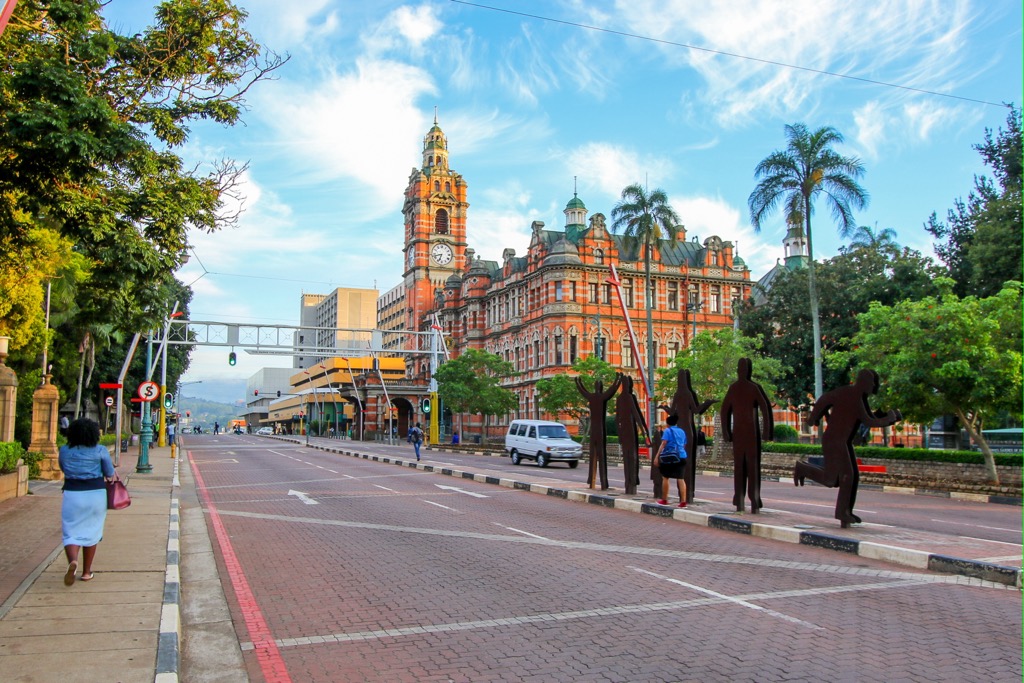
Explore Drakensberg with the PeakVisor 3D Map and identify its summits.








